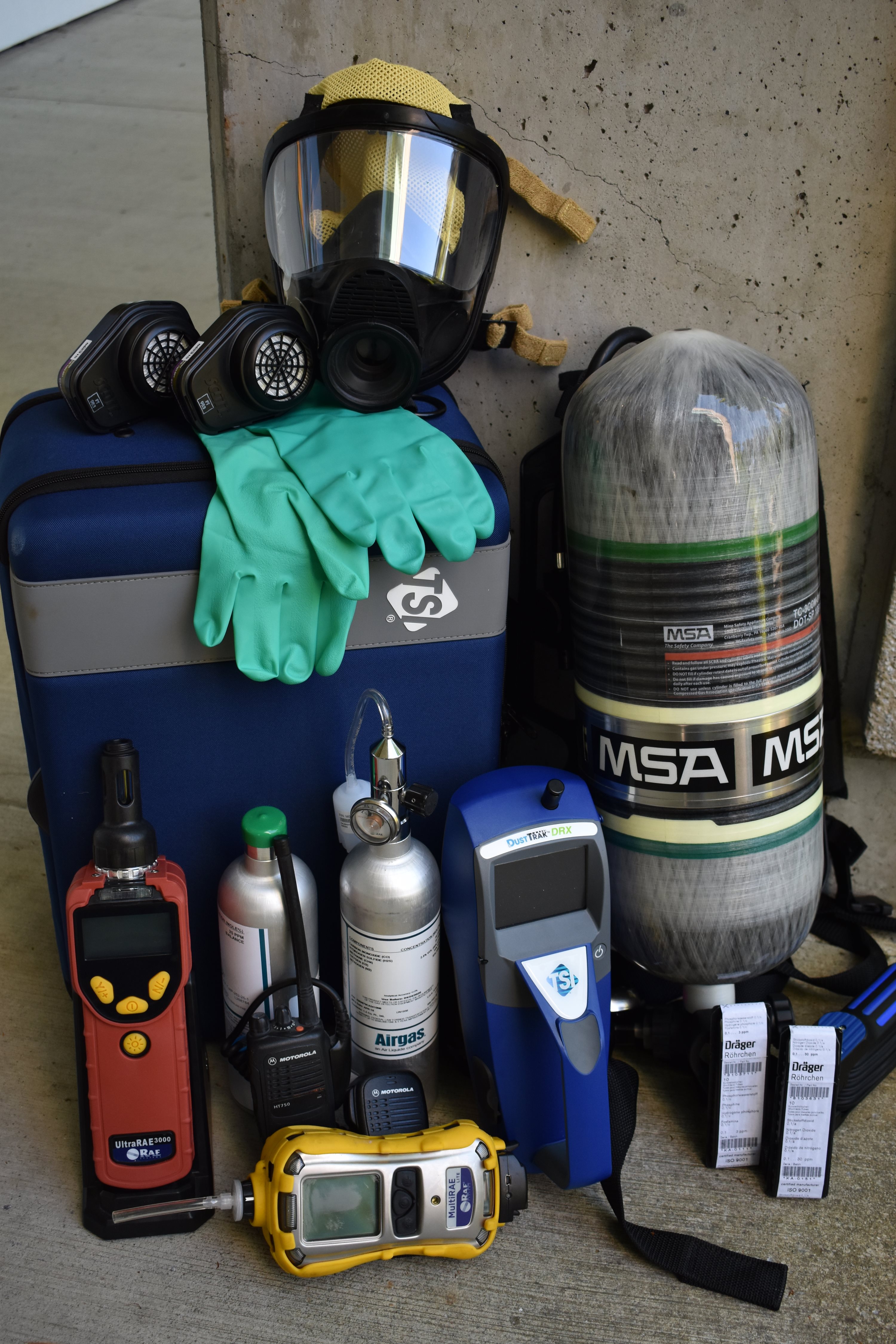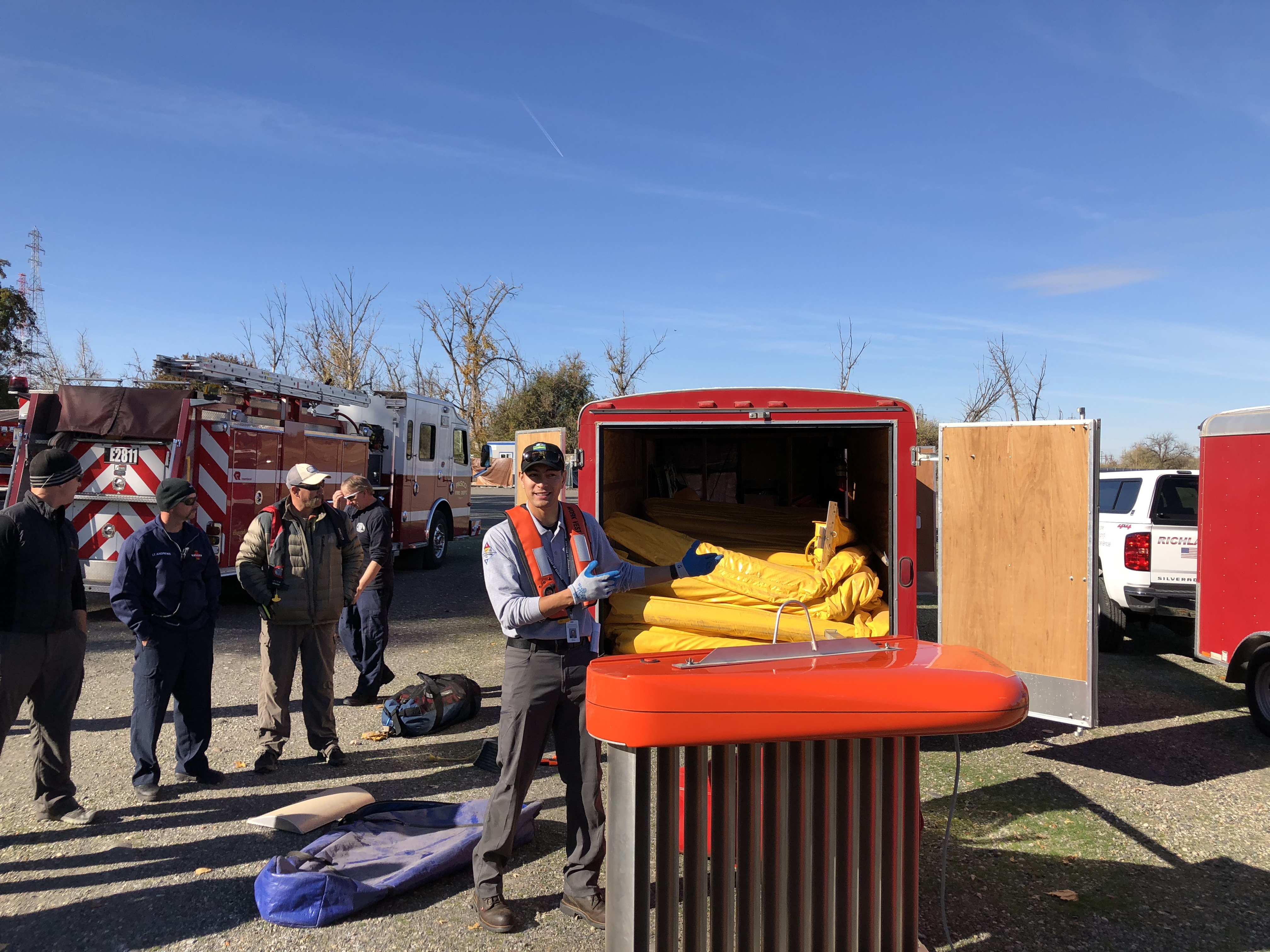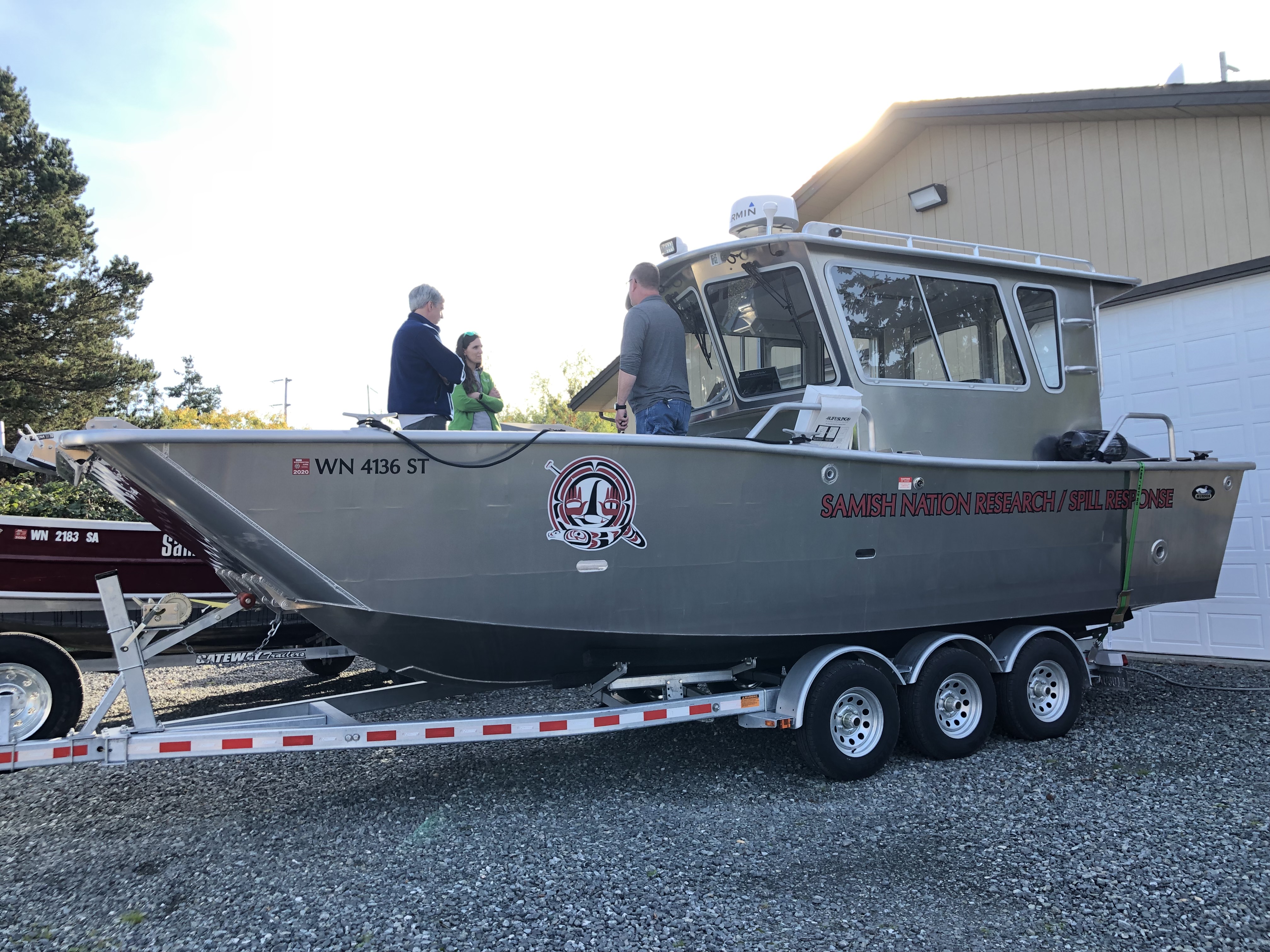
The longer oil is in the environment, the more damage it does. Staging emergency response spill equipment around the state saves precious time when something goes wrong. We provide more than $1 million each year in grants to local governments, fire departments, and other first-responding agencies to ensure that, when the worst happens, the equipment to contain and clean up hazardous spills will not be far away.
“Equipment” actually encompasses not just the physical tools responders need for a spill — such as absorbent booms and wildlife rescue gear — it’s also the goods, services, and training that goes into building a capable and effective response. Ecology grants are used for everything from air toxics monitoring equipment, to response boats, breathing gear, equipment trailers, communications devices, and firefighting foam.
“Oil spills, even very small ones, can have significant negative impacts on the environment,” said Laura Hayes, Spills Progam fund coordinator. “We cannot be everywhere around the state when an incident occurs. The state and the public rely on our partners to help with spill response. It's critical that those partners have the tools to keep themselves safe, the public safe, and to respond to a spill or hazardous materials incident.”
Some notable projects in the past include the White Salmon Fire Department’s request for breathing apparatus. Shortly after they received the equipment, the White Salmon fire team responded to an industrial fire with a potential ammonia leak. They were the first department on scene that could approach the blaze since they were able to get protective equipment required for such a hazardous response. But during that same incident, White Salmon found they could not communicate with other responders on scene. They and other departments later applied for upgraded radios using Ecology grant funding. Ecology staffer Geoff Baran shows off an equipment trailer purchased through an Ecology grant near Pasco in 2018.
In 2019, the Washington Department of Fish and Wildlife received funding for an airboat that will help them respond to spills in sensitive areas, such as waters that contain eel grass beds. WDFW also got funding for equipment to rescue oiled sea otter. For more on the WDFW airboat, visit our previous blog about that purchase.
Another example: The Pierce County hazardous incident team was using old beer delivery trucks to haul their decontamination equipment. After receiving grant funds, they replaced the trucks with trailers that require much less maintenance and are more compatible with other vehicles and needs on the scene of an emergency response.
And finally, the Jamestown S’Klallam Tribe on the Olympic Peninsula applied for funds to purchase a response vessel so they can respond to oil on the water, sinking boats, or other emergencies. The vessel will help mitigate the risk to responders while they are on the water. The vessel helps close an important gap, since the Port Angeles and Sequim area does not have many response capabilities nearby.
Spill responders talk onboard a vessel purchased by the Samish Indian Nation using an equipment grant.
How are the grants funded?
The current grant program is a result of the Oil Transportation Safety Act in 2015. The program is entirely state funded through the Model Toxics Operating Account, with no federal funding, and is usually about $3.1 million per biennium, depending on what the Legislature appropriates.
A workgroup of emergency first responders, oil spill response cooperatives, businesses that receive bulk crude oil, and representatives from the oil and rail industries helped develop the guidelines for how the funding will be spent.
How can I apply?
Equipment grants are open to Washington counties, cities and municipalities, ports, public utility districts, special purpose districts like clean air agencies and fire protection groups, federally recognized tribal governments, and Washington state agencies. Recipients of previous grant cycles are eligible to apply again.
The application process is entirely online. Applicants can apply by setting up a Secure Access Washington account, accessing Ecology Administration of Grants and Loans (EAGL) and searching for our grant.
Ecology’s Spills team will screen the applications for eligibility and then work with the workgroup to evaluate and score the applications based on need and the risk of spill in the applicant’s area. Applications are also scored for coordinating with other response organizations, such as a county working with a fire department to purchase equipment. There are also points awarded if an application demonstrates economic hardship or environmental health disparities in their area. The scores are averaged together and ranked in priority. Generally, the list is funded from highest priority down until the funding runs out.
Applications will be accepted now through 5 p.m. June 29. For details on the funding guidelines, visit our guidelines page.
Questions? Reach out to Laura Hayes at laura.hayes@ecy.wa.gov, or 425-495-2632.



